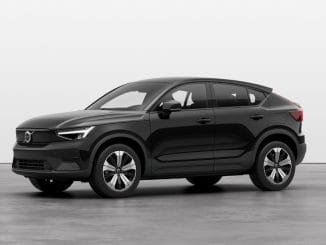Electric cars and plug-in hybrids are becoming more and more popular these days because of how they become more technologically advanced every year.
 To go along with that popularity, the number of public charging stations is also increasing around the world. Unlike a gasoline-fueled vehicle, one advantage of an electric car is that you can just plug it at your home or an EV charging station.
To go along with that popularity, the number of public charging stations is also increasing around the world. Unlike a gasoline-fueled vehicle, one advantage of an electric car is that you can just plug it at your home or an EV charging station.
If you own an electric vehicle or are looking to buy one in the near future, now is the time for you to learn about EV charging stations. Having knowledge about them, how they work, and where to find them can help keep your car running.
-
There Are Different Charging Station Network Operators
Charging stations are run by different network operators. Some of them require you to sign up for an account so you can use their facilities while others allow you to charge on a just-turn-up basis. These often use contactless payment, which is the most popular way of paying for public charging.
To use a networked charger, you must first subscribe to the network. Most of the time, registration is free and you can only incur fees once you start using their chargers like what EV Powerhouse and others do. There are some network operators though that allow you to use their charging facility for free. You’ll need a radio frequency identification (RFID) card or download the mobile app provided by the network to activate and use their charging station.
There are also independent public charging stations installed by local businesses or individuals who want to make charging available for their customers or on their property. You don’t have to be a member of any network to use these facilities.
-
Charging Levels Or Speed
There are three levels of charging speeds:
-
Level 1
This is the most basic and most familiar charging option. All electric vehicles come with a standard cord that can be connected to a wall socket. This allows you to charge your car anywhere you go. However, Level 1 only has a voltage power of 120 volts which isn’t powerful. As a result, it may take a long time for you to fully charge your electric vehicle.
-
Level 2
Most public charging stations come with Level 2 charging. Level 2 has a power output of 240 volts can get your car’s battery from 0-100% around 9 hours. However, Level 2 charging isn’t the best option, especially if you’re on a road trip or during your daily commute to work. It’s only ideal if you have the time to stop for several hours such as while you’re at work. You can park your car at a charging station and leave it there while you go to work.
-
Level 3
Level 3 is a rapid charging system that’s exclusively for fully electric vehicles only. It can recharge your car in less than an hour. You can fully recharge your car and get back on the road in 30-45 minutes, making Level 3 the ideal charging solution when you’re on a road trip.
If you’re thinking about going on a road trip in your electric vehicle, it’s best if you can map out the Level 3 fast-charging locations in advance. You might also consider booking a hotel that has a Level 2 charging facility on-site or nearby, so you can recharge your car’s battery as you stay for the night.
-
Use A Mobile Location App
Charging stations allows you to plug in your electric vehicle and recharge its battery. You can charge your car and keep it plugged in as long as necessary in a charging facility. This way, you can avoid running out of power and getting stuck in the middle of anywhere while you’re driving.
It’s also for this reason that you must learn about the locations of the nearest charging stations in your area. To do this, you must download the charging station mobile app to your smartphone so you’ll know where to go in case you need to plug in your car.
Every electric vehicle today comes with a built-in navigation system that can point you to the nearest charging stations. However, the locations of these facilities are sometimes outdated, and they also won’t tell you if the station is already occupied or not. You certainly don’t want your electric car to run out of power while you’re on a road trip.
Final Thoughts
EV charging stations are increasingly becoming commonplace around the world. They’re intended to serve the needs of electric vehicle owners. Expect to see more of them as the demand for electric cars and plug-in hybrids continues to increase every year.





